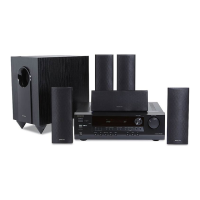Connecting
Your
Components-Continued
Step 1: Video Connection
mConnectyour set-top box'svideo outputjackto the
AV
receiver'sVIDEO 2 IN
jack
and connect the
AV
receiver's
MONITOR OUT
jack
to your
TV's
video inputjack.
m
If
yourVCR and TV have component videojacks, connect your set-top
box's
component video output to the
AV
receiver's COMPONENT VIDEO VIDEO 2 IN jacks, and connect the
AV
receiver's COMPONENT VIDEO
OUT jacks to your
TV's
component video in jacks. This offers better picture quality than composite video.
S Connect a coaxial feed from a TV antenna to your set-top
box's
antenna input
jack
(e.g.,
RF
IN), and connect
your set-top box's antenna output
jack
(e.g., RF OUT) to your
TV's
antenna inputjack.
Step
2:
Audio Connection
II
Connect your set-top box'Sloaudio output
jack
to the
AV
receiver's VIDEO 2 IN
URjacks.
m
If
your set-top box has' an optical digital audio outputjack, connect it to the
AV
receiver's DIGITAL IN OPTI-
CAL
I jack.
You
can enjoy Dolby and DTS listening modes with this connection.
II
If
your set-top box has a coaxial digital audio output
jack
instead
of
an optical one, connect it to the
AV
receiver's
DIGITAL IN COAXIAL jack, and set the DIGITAL INPUT assignment to COAX (see page 38). Coaxial con-
nections perform the same as optical ones.
6.
: Signal Flow
VIDEO
IN
TV,
projector,
etc.
Antenna input
(e.g., RF IN)
HT-R340
DKlITALIN
Coaxial feed
.............
Antenna output
(e.g., RF OUT)
Coaxial feed from TV antenna
c::=::::::J
0 0 0 0 I
Satellite, cable, set-top
box, etc.
-----1---
-1-----------------.,1------
@
@@@
@
OPTICAL COAXIAL V
P.
PR
VIDEO
OUT
OUT
COMPONENT VIDEO OUT OUT
II
32

